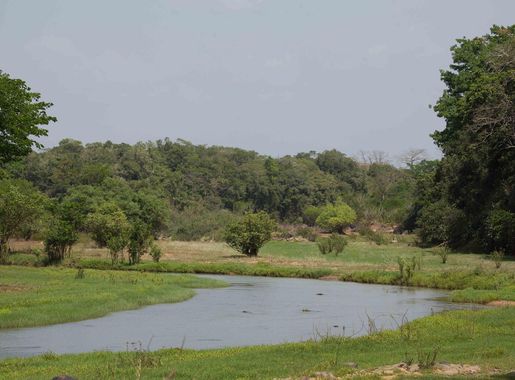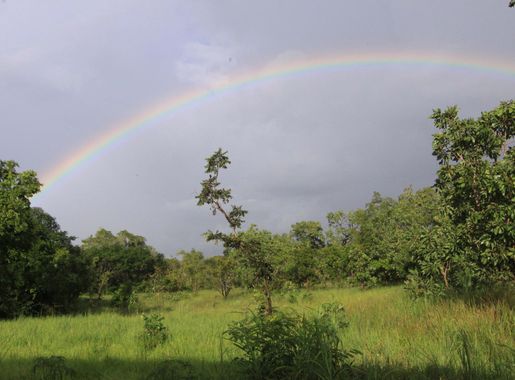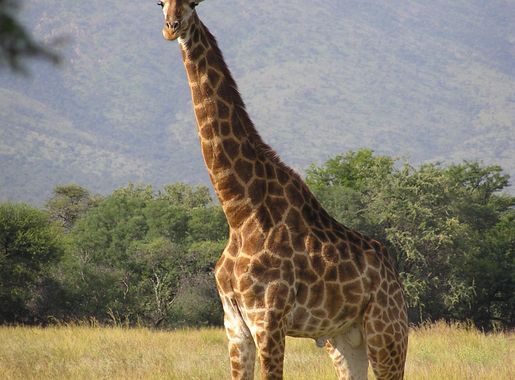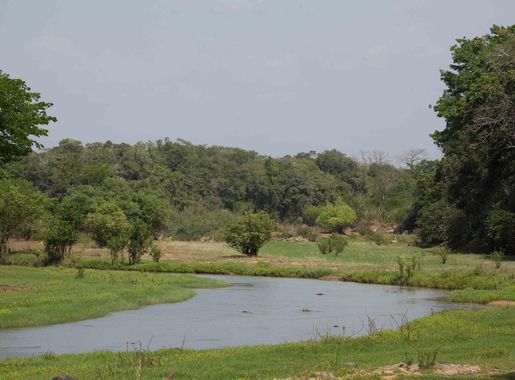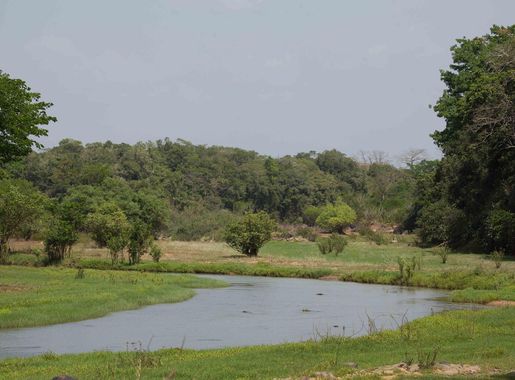
The Wild Beauty of Comoé National Park
Explore the untamed wilderness of Comoé National Park, a UNESCO World Heritage Site teeming with wildlife and rich biodiversity in the heart of Côte d'Ivoire.
Comoé National Park, located in the northeast of Côte d'Ivoire, is one of the largest protected areas in West Africa. This UNESCO World Heritage Site is renowned for its rich biodiversity and varied landscapes, ranging from savannahs and forests to wetlands and rivers. The park is named after the Comoé River, which flows through its heart, creating a lush environment that supports a wide range of wildlife. Visitors to Comoé National Park can expect to see an impressive array of animals, including elephants, lions, leopards, and hippos. The park is also home to numerous bird species, making it a paradise for birdwatchers. The diverse ecosystems provide an ideal habitat for both flora and fauna, offering a unique opportunity to observe nature in its purest form. Beyond its natural wonders, Comoé National Park offers a glimpse into the traditional cultures of the local communities. Visitors can engage with local guides who share their knowledge of the park's history and the significance of its flora and fauna. The park's remote location adds to its charm, providing a serene escape from the hustle and bustle of modern life.
Local tips in Comoé National Park
- Visit during the dry season (November to April) for the best wildlife viewing opportunities.
- Hire a local guide to enhance your experience and gain deeper insights into the park's biodiversity.
- Carry plenty of water, sunscreen, and insect repellent to stay comfortable during your visit.
- Respect the local wildlife by keeping a safe distance and avoiding loud noises.
- Check for any travel advisories or park regulations before your trip.
The Wild Beauty of Comoé National Park
Comoé National Park, located in the northeast of Côte d'Ivoire, is one of the largest protected areas in West Africa. This UNESCO World Heritage Site is renowned for its rich biodiversity and varied landscapes, ranging from savannahs and forests to wetlands and rivers. The park is named after the Comoé River, which flows through its heart, creating a lush environment that supports a wide range of wildlife. Visitors to Comoé National Park can expect to see an impressive array of animals, including elephants, lions, leopards, and hippos. The park is also home to numerous bird species, making it a paradise for birdwatchers. The diverse ecosystems provide an ideal habitat for both flora and fauna, offering a unique opportunity to observe nature in its purest form. Beyond its natural wonders, Comoé National Park offers a glimpse into the traditional cultures of the local communities. Visitors can engage with local guides who share their knowledge of the park's history and the significance of its flora and fauna. The park's remote location adds to its charm, providing a serene escape from the hustle and bustle of modern life.
When is the best time to go to Comoé National Park?
Unmissable attractions to see
Parc a boeuf
Experience the serene beauty of Bouna at Parc a Boeuf, a unique animal park perfect for family outings and nature explorations.

de Bouna Public Garden
Explore the tranquility of de Bouna Public Garden, a lush retreat in Bouna, perfect for nature lovers and those seeking peace and serenity.
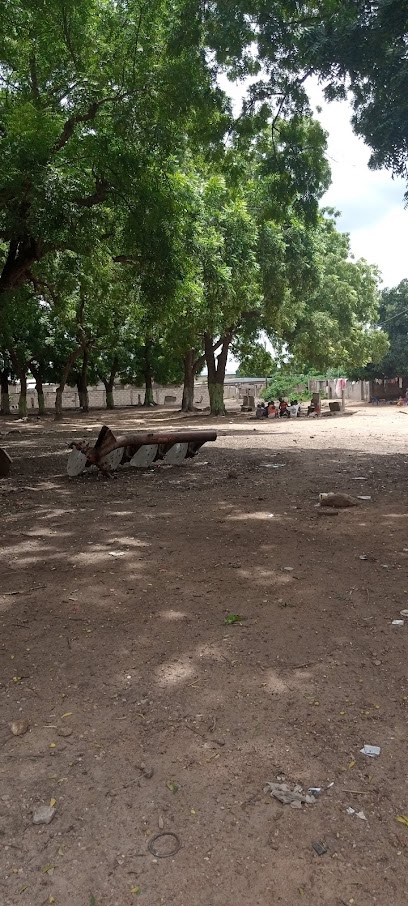
Parc National de la Komoé
Discover the breathtaking landscapes and rich biodiversity of Parc National de la Komoé, a true gem in Côte d'Ivoire's natural heritage.

Rond point de Tabagne
Explore the vibrant culture and local life at Rond Point de Tabagne, a key tourist attraction in the heart of Tabagne.
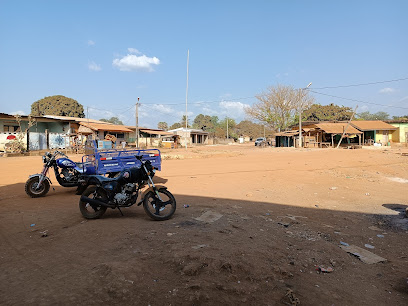
Flabougou(bougou)
Explore Flabougou, a captivating tourist attraction in Bougou, offering rich culture, stunning landscapes, and serene experiences for every traveler.
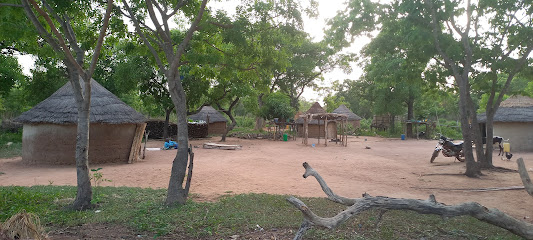
Comoe National Park
Discover the captivating wildlife and breathtaking landscapes of Comoe National Park, a must-visit natural paradise in Ivory Coast.

Côte du diable
Discover the breathtaking hiking trails and stunning landscapes of Côte du Diable in Bondoukou, a must-visit destination for nature lovers.

Domaine agricole Yougbare
Explore the beautiful landscapes and rich agricultural heritage at Domaine Agricole Yougbare, a serene park in Bouna, Côte d'Ivoire.

Barrage de doropo
Explore the serene beauty of Barrage de Doropo, a lush garden oasis in Côte d'Ivoire, perfect for relaxation and nature immersion.

Poste d'entrée du PARC DE LA COMOE
Experience the tranquility and natural beauty of Parc de la Comoé in Bouna, a must-visit park showcasing the rich biodiversity of Côte d'Ivoire.

Poste d'entrée au PARC DE LA COMOE
Explore the breathtaking landscapes and rich biodiversity of Parc de la Comoé, a serene natural haven in the heart of Ivory Coast.

La place publique Yakassé Bini
Explore La Place Publique Yakassé Bini, a serene park in Kouassi-Datèkro, where nature meets tranquility for tourists seeking relaxation.

Domaine EPC JEAN PAUL II
Experience the tranquility of Domaine EPC JEAN PAUL II, a serene park in Bouna, Ivory Coast, perfect for relaxation and enjoying nature's beauty.

Essential places to dine
Bushman Café
Discover Bushman Café in Abidjan: A delightful culinary haven offering an exquisite blend of local and international dishes.
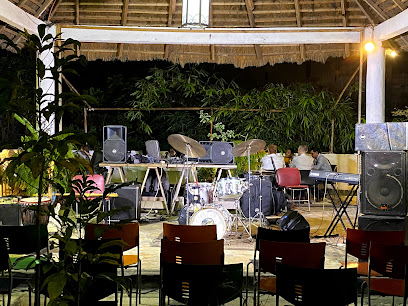
Copa D'Elio
Discover the authentic taste of Italy at Copa D'Elio in Abidjan—where delicious wood-fired pizzas meet vibrant local culture.
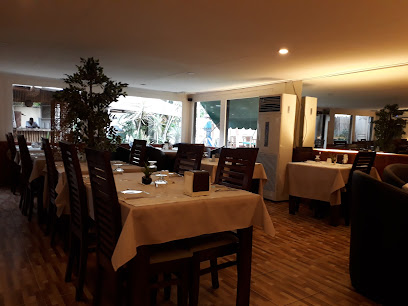
Le Débarcadère
Experience authentic Ivorian cuisine at Le Débarcadère in Abidjan's Treichville district, where flavors come alive in every dish.
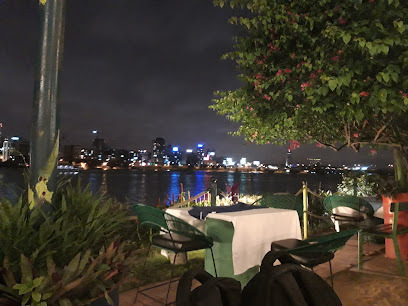
Chez Hélène
Experience the heart of African cuisine at Chez Hélène in Abidjan - where every dish tells a story.
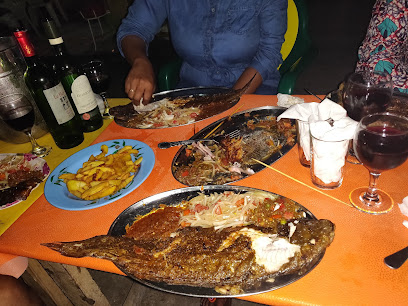
Le Mechoui
Experience the rich flavors of Lebanon at Le Mechoui in Abidjan - where authentic dishes meet warm hospitality.

Restaurant Saakan
Experience exquisite Ivorian cuisine at Restaurant Saakan in Abidjan - where tradition meets modern culinary artistry.
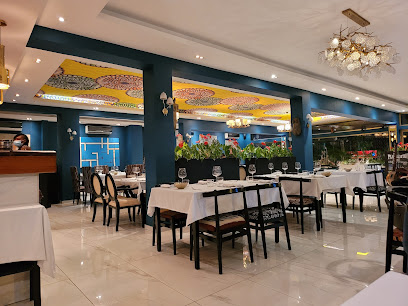
Mövenpick Hotel Abidjan
Discover unparalleled luxury at Mövenpick Hotel Abidjan – where elegance meets exceptional service in Ivory Coast's vibrant capital.

Restaurant Kajazoma
Experience authentic Ivorian cuisine at Restaurant Kajazoma in Abidjan – where tradition meets modern culinary artistry.
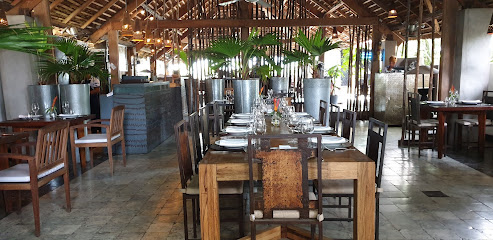
Jardyland
Experience the best of Ivorian cuisine at Jardyland – where flavor meets tradition in a cozy atmosphere.
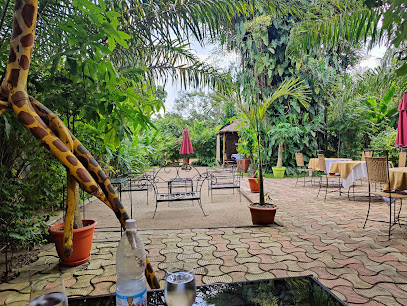
La Taverne Romaine
Experience exquisite dining at La Taverne Romaine in Abidjan – where local flavors meet international culinary excellence.
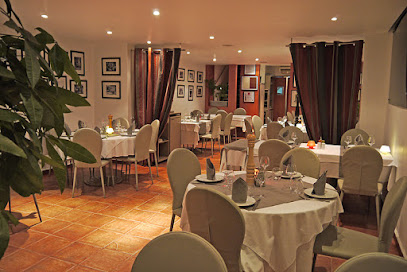
Restaurant Chez Arthur
Discover authentic Ivorian cuisine at Restaurant Chez Arthur in Cocody, Abidjan – where every meal tells a story.
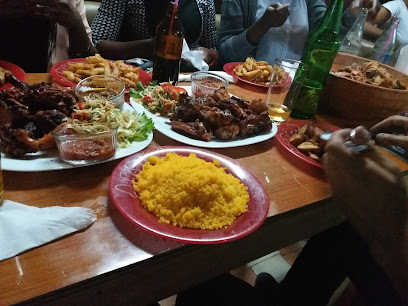
Espace331
Discover the flavors of Côte d'Ivoire at Espace331 – where local cuisine meets international flair in a vibrant setting.
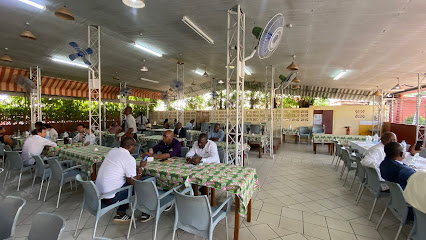
La Villa Alfira
Experience the vibrant flavors of Côte d'Ivoire at La Villa Alfira, a top restaurant in Abidjan offering an unforgettable dining experience.
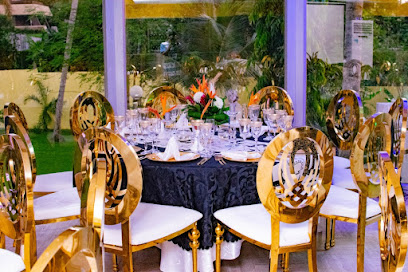
La Croisette
Experience authentic Ivorian cuisine at La Croisette, where delicious flavors meet vibrant ambiance in the heart of Abidjan.
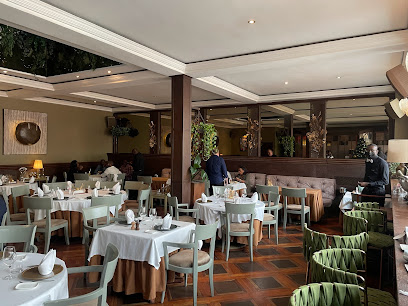
Ô Feu de Bois
Discover Abidjan's culinary scene at Ô Feu de Bois – where local flavors meet international cuisine in a warm and inviting atmosphere.
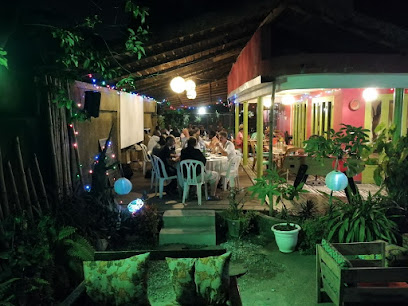
Markets, malls and hidden boutiques
Marché Bna
Explore the bustling Marché Bna in Bouna, where local crafts, fresh produce, and vibrant culture come together in an unforgettable shopping experience.
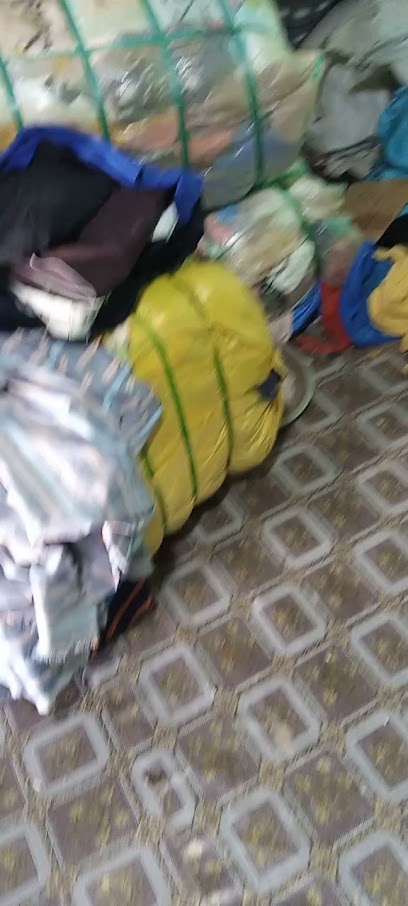
Diallo & frère
Discover the vibrant local flavors and products at Diallo & Frère, your go-to supermarket in Bouna, Côte d'Ivoire.
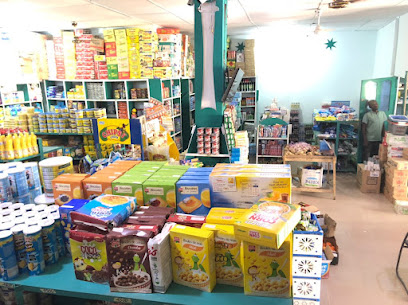
Zongo Kokorokai
Explore Zongo Kokorokai in Bouna: A vibrant shopping mall blending local culture and unique retail experiences.

Zongo 2 Colo électricité
Explore Zongo 2 Colo Électricité in Bouna for an unforgettable shopping experience blending local culture and vibrant retail options.
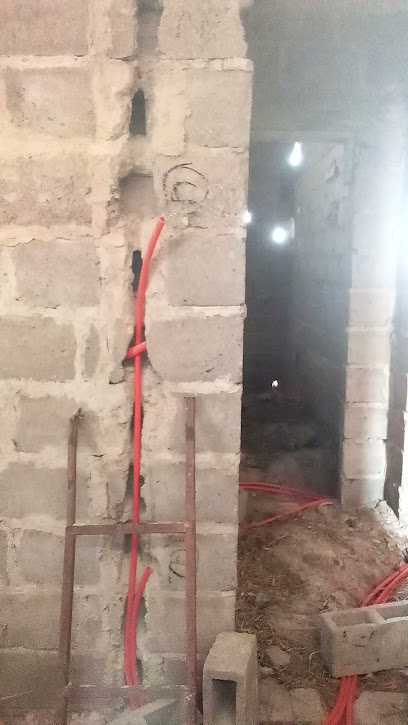
Boutique
Explore Boutique in Doropo for a unique shopping experience featuring local crafts, modern retail, and a vibrant cultural atmosphere.
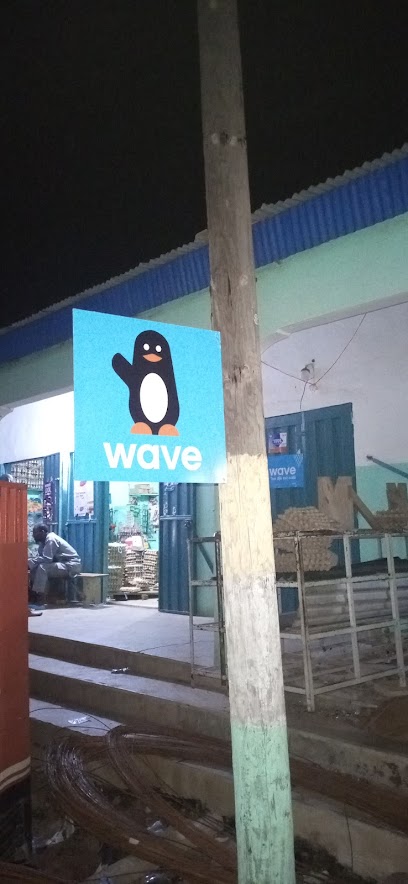
Zongo De 2carrefour
Discover the vibrant shopping experience at Zongo De 2carrefour, Bouna's chic shopping hub filled with unique boutiques and local flavors.

Rouamba et frère
Experience the lively shopping and cultural heart of Varle at Rouamba et Frère, a must-visit destination for every traveler.

SOCOB
Explore SOCOB Shopping Mall in Bondoukou - a vibrant shopping destination blending local culture and contemporary retail experiences.

Ouattarasso
Explore Ouattarasso, the heart of Bouna's fashion scene, offering unique clothing pieces that celebrate local culture and craftsmanship.

Moussa shop
Explore Moussa Shop in Téhini for unique local goods and cultural treasures that reflect the vibrant spirit of the region.

Usine d'emballage de la noix de cajou de Sepingo
Explore the vibrant world of cashew nut processing at Sepingo's fascinating outlet store, a unique cultural experience in Côte d'Ivoire.

watch Time
Explore exquisite timepieces in Bouna's premier watch store – a treasure trove for collectors and gift-givers alike.
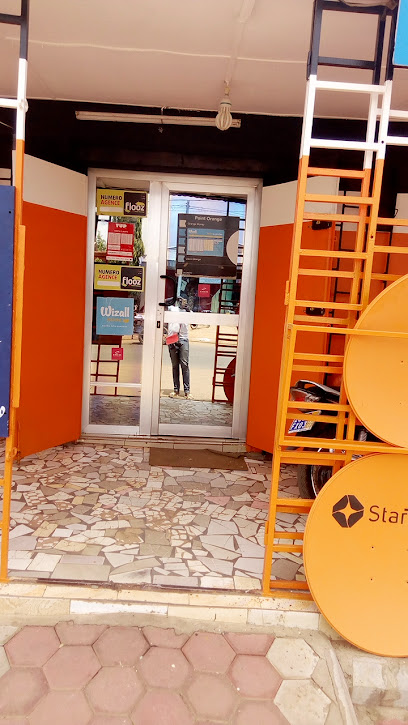
Boutique Alassane
Explore Boutique Alassane for exquisite fashion accessories that blend local craftsmanship with contemporary style, perfect for every traveler.
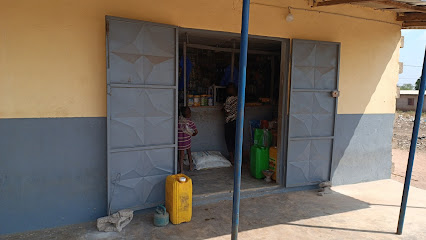
BOUTIQUE CARREFOUR CISSÉ
Explore the heart of Bouna at Boutique Carrefour Cissé, where local flavors and vibrant culture meet in a unique shopping experience.
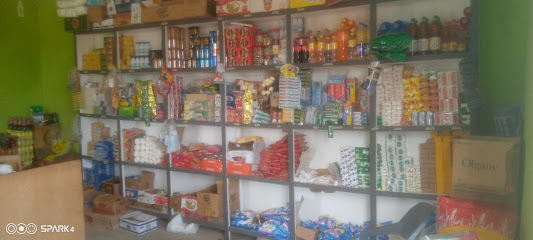
Marché
Discover the heart of Nassian at Marché, where vibrant local culture meets unique shopping experiences in a lively marketplace.

Essential bars & hidden hideouts
Parker Place
Immerse yourself in the vibrant nightlife of Abidjan at Parker Place, a lively lounge with live music, delicious drinks, and a welcoming atmosphere.
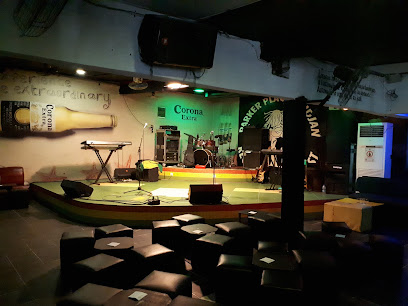
L'EDEN Abidjan | Food Sky Bar
Discover the vibrant culinary scene at L'EDEN Abidjan, a top food sky bar featuring tapas, cocktails, and live music with stunning city views.

The RooPh
Discover The RooPh in Abidjan: a trendy lounge and restaurant offering stunning views, exquisite cuisine, and a vibrant atmosphere for an unforgettable experience.

Life Star
Discover the lively ambiance and exquisite drinks at Life Star, Abidjan's premier bar for nightlife and socializing.
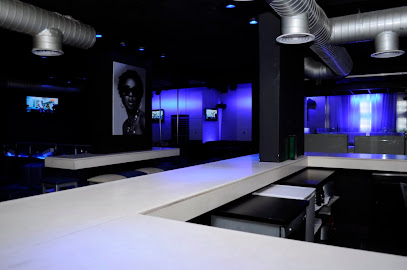
Ninety Degree 90°
Ninety Degree 90°: Experience the best cocktails and live music in the heart of Abidjan's nightlife.
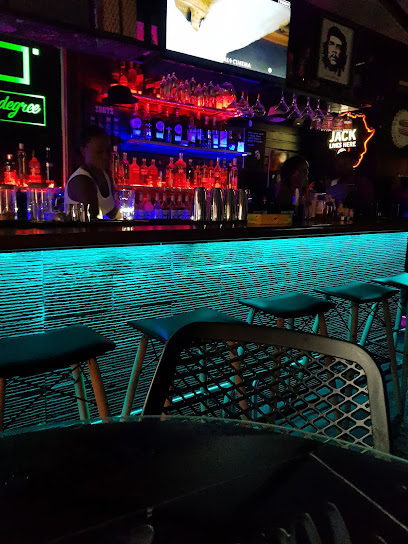
Le FéLaH
Experience the vibrant nightlife of Abidjan at Le FéLaH, where delightful cuisine and lively ambiance meet in a stylish lounge setting.

Complexe Bento Winner Bar
Discover the lively Complexe Bento Winner Bar in Bondoukou, a perfect spot for drinks, local flavors, and vibrant nightlife.
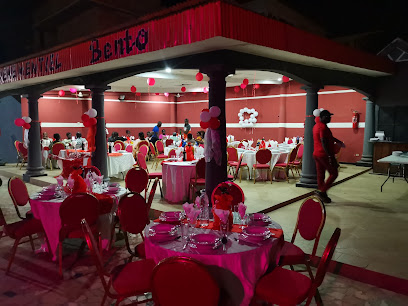
Suzi Bar
Experience the vibrant nightlife at Suzi Bar in Bouna, where lively music and a diverse drink selection create an unforgettable atmosphere.
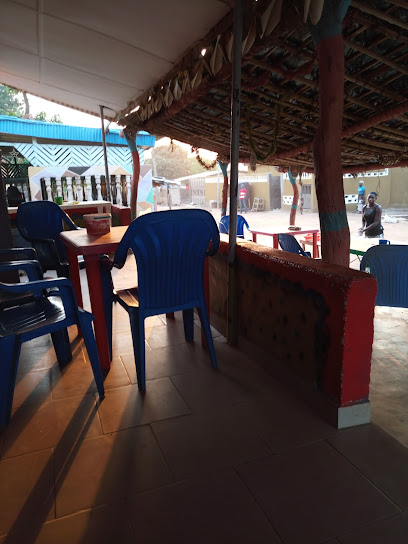
MONAK ABIDJAN
Experience the lively atmosphere of Monak Abidjan, where chic decor meets delectable cocktails in the heart of the city’s nightlife.
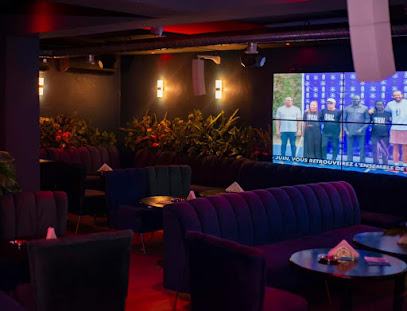
Maquis Vip Boulevard des stars
Experience the vibrant atmosphere and authentic Ivorian flavors at Maquis Vip Boulevard des Stars in Bondoukou.

Maquis Haut Niveau
Discover the vibrant atmosphere of Maquis Haut Niveau in Tanda, where local culture meets refreshing beverages for an unforgettable experience.
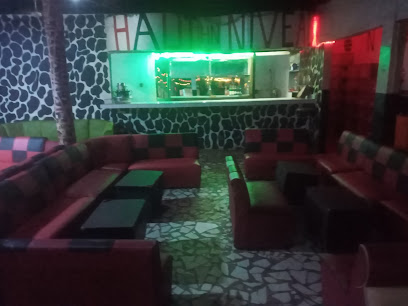
Maquis bar le Gouverneur
Discover the vibrant nightlife at Maquis Bar le Gouverneur in Bondoukou, where local culture and friendly vibes come together for an unforgettable experience.
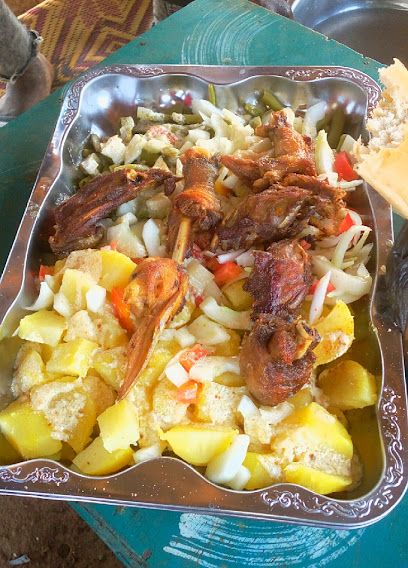
Le belio bar
Discover the lively ambiance and local flavors at Le Belio Bar in Bondoukou, a must-visit destination for travelers seeking authentic experiences.
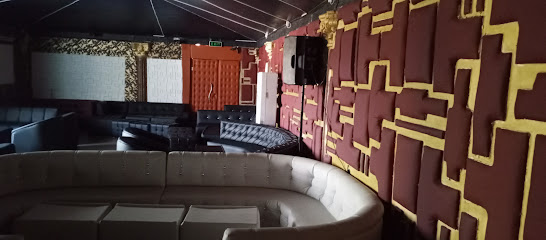
L'ile o'cocktails
Discover the vibrant flavors of L'ile o'cocktails in Abidjan, a must-visit cocktail bar and coffee shop with a tropical vibe.

N'KOULA CITY
N'KOULA CITY: Your gateway to unforgettable nights in Bondoukou with great drinks and live entertainment.
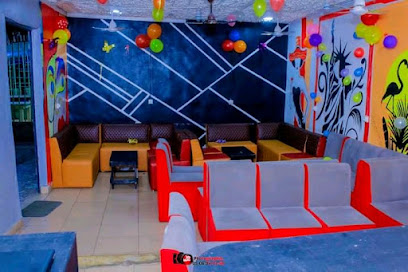
Local Phrases about Comoé National Park
-
- HelloAkwaaba
[ak-wa-ba] - GoodbyeDa yie
[da-yie] - YesAane
[aa-ne] - NoDaabi
[daa-bi] - Please/You're welcomeMesrɛ
[mes-re] - Thank youMedaase
[me-da-se] - Excuse me/SorryMepa wo kyɛw
[me-pa wo chay-oo] - How are you?Wo ho te sɛn?
[wo ho te sen?] - Fine. And you?Adɛn. Na wo te sɛn?
[a-den. na wo te sen?] - Do you speak English?Wo ka kasa ɛnglish?
[wo ka ka-sa english?] - I don't understandMe te sɛn
[me te sen]
- HelloAkwaaba
-
- I'd like to see the menu, pleaseMepɛ sɛ me ka nkyerɛ menu no
[me-pe se me ka n-cher-ey menu no] - I don't eat meatMe de nni adwene
[me de ni ad-we-ne] - Cheers!Afehyia pa
[a-fe-hyi-a pa] - I would like to pay, pleaseMepɛ sɛ me yɛ kwan
[me-pe se me ye kwan]
- I'd like to see the menu, pleaseMepɛ sɛ me ka nkyerɛ menu no
-
- Help!Boa me
[boa me] - Go away!Firi me
[fi-ri me] - Call the Police!Kyerɛ nokyir
[cher-ey no-cher] - Call a doctor!Kyerɛ dɔkita
[cher-ey do-chee-ta] - I'm lostMe te sɛn
[me te sen] - I'm illMe nya
[me nya]
- Help!Boa me
-
- I'd like to buy...Mepɛ sɛ me bra...
[me-pe se me bra] - I'm just lookingMe hu nso
[me hu en-so] - How much is it?Aduane bɛn?
[ad-wa-ne ben?] - That's too expensiveNkɔsoɔ bɛn
[en-koso-o ben] - Can you lower the price?Wopɛ sɛ wote nkyɛn aduane?
[wo-pe se wo-te n-chen ad-wa-ne?]
- I'd like to buy...Mepɛ sɛ me bra...
-
- What time is it?Afei bɛn mu?
[a-fe-ey ben mu?] - It's one o'clockKɔkɔɔn
[ko-ko-on] - Half past (10)Ntɔn mu
[n-ton mu] - MorningAnɔpa
[an-oh-pa] - AfternoonAwia
[a-wi-a] - EveningAnɔpa
[an-oh-pa] - YesterdayƐnnora
[en-no-ra] - TodayƐda
[e-da] - TomorrowƐbɛ
[e-be] - 1Kɔkɔɔn
[ko-ko-on] - 2Baako
[ba-ko] - 3Mmienu
[mmi-en-u] - 4Ɛnan
[en-an] - 5Enum
[en-um] - 6Nsia
[n-si-a] - 7Nson
[n-son] - 8Nanan
[nan-an] - 9Nkron
[en-cron] - 10Du
[du]
- What time is it?Afei bɛn mu?
-
- Where's a/the...?Ɛwɔ hia...?
[e-wo hi-a?] - What's the address?Ayi adwuma no bɛn?
[ayi ad-wu-ma ben?] - Can you show me (on the map)?Wopɛ sɛ wo hwe me (wɔ map mu)?
[wo-pe se wo hwe me (wo map mu)?] - When's the next (bus)?Ɛda bɛn na ɛmaa (trotro)?
[e-da ben na e-ma (tro-tro)?] - A ticket (to ....)Din kɔkɔɔ (kɔ....)
[din ko-ko-on (ko....)]
- Where's a/the...?Ɛwɔ hia...?
History of Comoé National Park
-
Comoé National Park, located in northeastern Côte d'Ivoire, is one of the largest protected areas in West Africa, covering approximately 11,500 square kilometers. The region has a rich history dating back to prehistoric times. Archaeological evidence suggests that early human inhabitants occupied the area thousands of years ago. These early communities lived off the land, hunting, fishing, and gathering, contributing to the region's diverse cultural and biological heritage.
-
During the late 19th and early 20th centuries, Côte d'Ivoire came under French colonial rule. The colonial administration recognized the ecological importance of the area and began efforts to protect its unique biodiversity. In 1926, the French colonial government established Comoé National Park as a game reserve. This initial designation aimed to preserve the region's wildlife and natural resources from over-exploitation.
-
After gaining independence from France in 1960, Côte d'Ivoire continued to prioritize the conservation of Comoé National Park. In 1968, the Ivorian government officially upgraded the status of Comoé from a game reserve to a national park. This move was part of a broader effort to promote environmental conservation and sustainable tourism. The park's management focused on protecting its rich ecosystems, which include savannas, forests, and wetlands.
-
In 1983, Comoé National Park was designated as a UNESCO World Heritage Site due to its exceptional biodiversity and ecological significance. The park is home to a wide variety of flora and fauna, including several endangered species. The UNESCO designation brought international recognition and support for conservation efforts, highlighting the park's global importance as a natural heritage site.
-
Despite its protected status, Comoé National Park has faced numerous challenges over the years, including poaching, illegal logging, and agricultural encroachment. Political instability in Côte d'Ivoire during the early 2000s further exacerbated these threats. However, concerted efforts by the Ivorian government, international organizations, and local communities have helped mitigate some of these issues. Conservation programs have been implemented to protect the park's wildlife, restore degraded habitats, and promote sustainable livelihoods for surrounding communities.
-
Comoé National Park is not only a natural treasure but also a cultural one. The park and its surrounding areas are home to several ethnic groups, each with its own unique traditions and practices. The local communities have a deep connection to the land and its resources, which are integral to their cultural identity and way of life. Efforts have been made to involve these communities in conservation initiatives, recognizing their traditional knowledge and fostering a sense of stewardship for the park's future.
Comoé National Park Essentials
-
Comoé National Park is located in the northeastern part of Côte d'Ivoire. The nearest international airport is Félix-Houphouët-Boigny International Airport in Abidjan, approximately 600 kilometers away. From Abidjan, you can take a domestic flight to Bondoukou, which is the closest town to the park, and then travel by road. Alternatively, you can drive or hire a taxi from Abidjan to the park, which usually takes around 8 to 10 hours depending on road conditions.
-
Within Comoé National Park, transportation options are limited. The most convenient way to explore the park is by hiring a 4x4 vehicle, which can navigate the various terrains. Guided tours with experienced drivers are highly recommended. Bicycles and motorbikes are also available for rent in some areas, but they are not suitable for all parts of the park due to rough terrain.
-
The official currency in Côte d'Ivoire is the West African CFA Franc (XOF). Credit cards are not widely accepted in and around the park, so it is advisable to carry sufficient cash. ATMs are scarce, especially within the park boundaries, so it is best to withdraw cash in larger towns or cities before heading to the park.
-
Comoé National Park is generally safe for tourists, but it is important to remain cautious. Petty crime can occur, especially in crowded areas and near park entrances. Avoid walking alone at night and be mindful of your belongings. Some areas outside the park may have higher crime rates, so it is advisable to stay informed about the current situation and follow local news.
-
In case of emergency, dial 170 for police, 180 for fire, and 185 for medical emergencies. It is crucial to have travel insurance that covers medical emergencies and evacuation. The nearest medical facilities are located in Bondoukou, but for serious medical issues, it is recommended to seek treatment in Abidjan. Keep a list of emergency contact numbers and inform your tour guide or accommodation about your whereabouts.
-
Fashion: Do wear lightweight and breathable clothing suitable for the tropical climate. Avoid wearing bright colors that may attract insects. Religion: Do respect local customs and religious practices. Public Transport: Do use registered taxis and avoid hitchhiking. Greetings: Do greet locals with a handshake and a smile. Eating & Drinking: Do try local dishes and accept food and drink offerings graciously. Don't drink tap water; always opt for bottled or filtered water.
-
To experience Comoé National Park like a local, consider visiting during the dry season (November to April) when wildlife sightings are more frequent. Engage with local guides who possess extensive knowledge about the flora and fauna. Participate in traditional cultural activities and festivals in nearby villages. Respect the natural environment by not leaving litter and minimizing your ecological footprint.
Nearby Cities to Comoé National Park
-
Things To Do in Sunyani
-
Things To Do in Bobo-Dioulasso
-
Things To Do in Tamale
-
Things To Do in Yamoussoukro
-
Things To Do in Kumasi
-
Things To Do in Koudougou
-
Things To Do in Dédougou
-
Things To Do in Daloa
-
Things To Do in Abidjan
-
Things To Do in Ouagadougou
-
Things To Do in Ziniaré
-
Things To Do in Koforidua
-
Things To Do in Sekondi-Takoradi
-
Things To Do in Takoradi
-
Things To Do in Cape Coast

